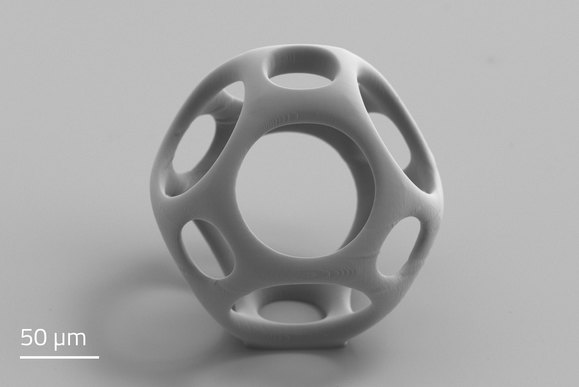Nanoscribe presents the new IP-Visio printing material for life science applications. This material is non-cytotoxic, low-fluorescent and designed for the 3D Microfabrication of biocompatible microstructures.
With IP-Visio, Nanoscribe’s 3D printers open up the way to produce intricate, filigree microenvironments needed in 3D cell culture and tissue engineering.
2D cell culture systems have been standard for the past century, enabling findings in many applications, ranging from stem cell research, drug screening, and regenerative medicine. However, cells interact with neighboring cells, the extracellular matrix, and surrounding molecules in 3D. Cells in vivo experience an extremely complex three-dimensional environment at the organ, tissue and cellular level down and below the micrometer scale.
The advances of Nanoscribe’s 3D Microfabrication have demonstrated how this technology enables the fabrication of intricate 3D microstructures such as 3D cell scaffolds.
Biocompatibility and low autofluorescence
The printing material is non-cytotoxic according to ISO 10993-5. This makes IP-Visio suitable for cell-friendly 3D scaffolds. With this material, high-precision microstructures can be fabricated to mimic realistic and high-precision microenvironments. An exemplary application is multi-cell scaffolds that serve as supporting material to seed and study cells in 3D.
Remember, you can post free of charge job opportunities in the AM Industry on 3D ADEPT Media or look for a job via our job board. Make sure to follow us on our social networks and subscribe to our weekly newsletter : Facebook, Twitter, LinkedIn & Instagram ! If you want to be featured in the next issue of our digital magazine or if you hear a story that needs to be heard, make sure to send it to contact@3dadept.com.






